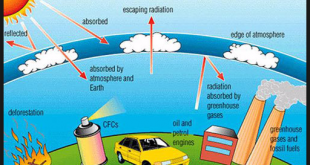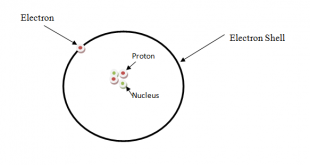AIR POLLUTION Contamination of air with smoke, dust and harmful gases is called air pollution and the substances causing pollution are called as pollutants. The common pollutants are: Gases like sulphur oxides, nitrogen oxides, carbon oxides and hydrogen sulphide, smoke soot and particulate matter etc. SOURCES OF AIR POLLUTION Burning/combustion …
Read More »Case Study on Air and Water Pollution
What is water pollution? The contamination of water with unwanted and harmful substances is called water pollution. The sources of water pollution are industrial wastes, synthetic detergents, agricultural run-offs, oil leakage etc. Water pollution affects the aquatic life, makes the water non potable for drinking and causes a phenomenon known …
Read More »POLYMERS – CLASSIFICATION OF POLYMERS
POLYMERS Polymers can be defined as the high molecular mass macromolecules that are formed due to the repetition of the basic unit, monomer. MONOMER The unit molecules that combines with each other to form a polymer. POLYMERISATION The process of formation of polymers by the repeated addition of the monomers …
Read More »What are Acids and Bases?
ACIDS Acids are those substances which have a sour taste and can turn blue litmus red. BASES Bases are those substances which have a bitter taste and can turn red litmus blue. ARRHENIUS CONCEPT An acid is any hydrogen containing compound which gives H+ ion in aqueous solution. While, base …
Read More »GLOBAL WARMING
Increase in the concentration of carbon dioxide in the air is one of the major causes of global warming. When the solar radiation fall on the earth’s surface, a part of the radiation is absorbed and a part is reflected back into the space. Green house gases like carbon dioxide …
Read More »What is Brownian Movement
MATTER Anything which occupies space and has mass is known as matter. For eg, air, water, milk, hydrogen. Everything around us is made up of tiny particles. The particles which make up the matter are known as atoms. These small particles are in constant motion, which is known Brownian movement. …
Read More »Introduction to Atomic Structure
Atomic Structure
Read More »Mastering the Periodic Table Elements: 5 Key Elements, Periods, Groups, and Mendeleev’s Legacy
Unveil the foundational principles of the periodic table elements in chemistry, encompassing periods, groups, and the profound impact of Dmitri Mendeleev's contributions. Dive into the organized realm of elements, governed by atomic number and electron configuration.
Read More » IT2EDU Empowering Education Through Technology
IT2EDU Empowering Education Through Technology


